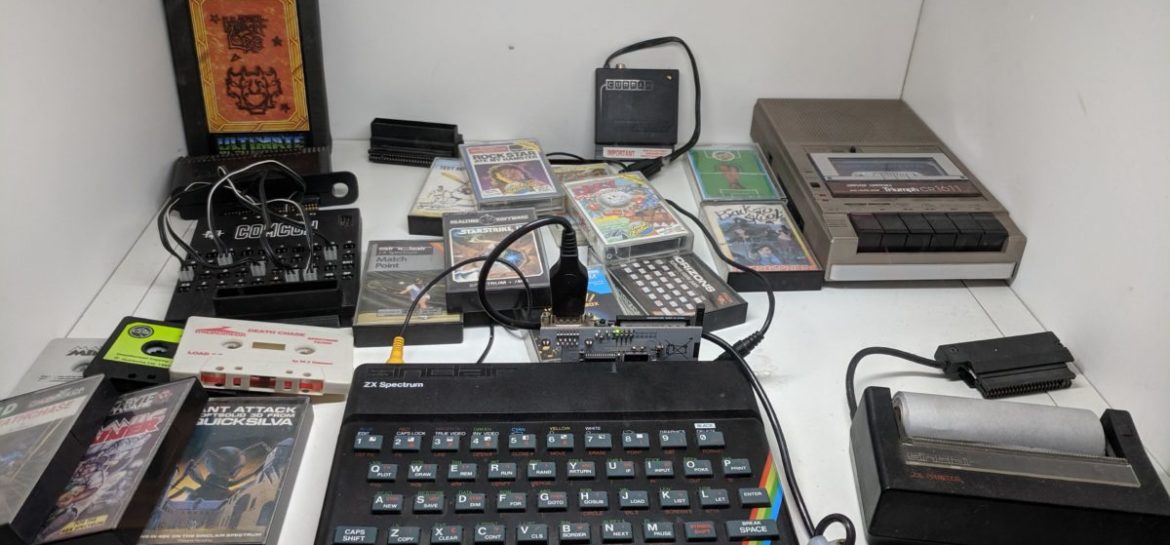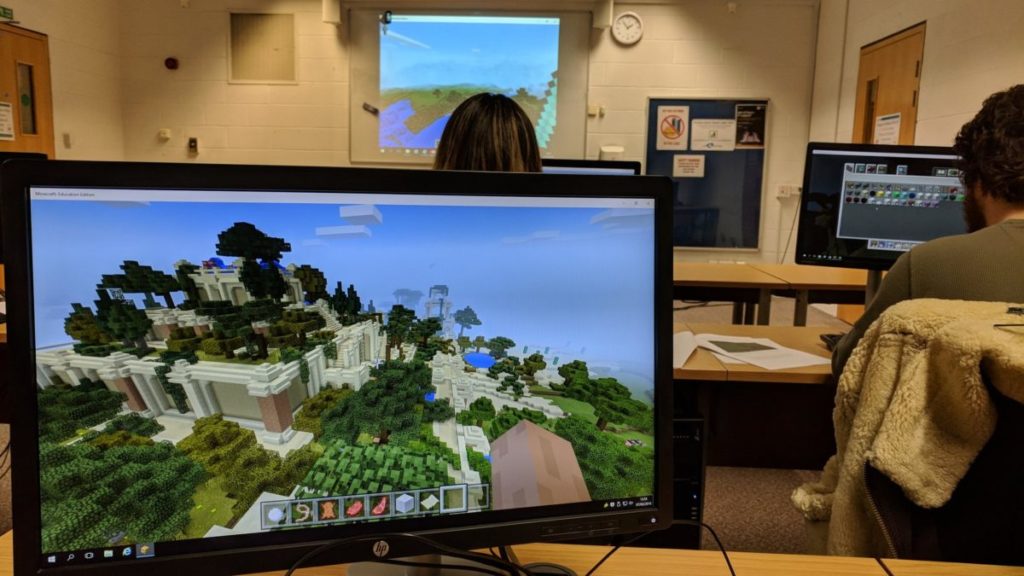
Last week I was over at our National Horizons Centre meeting with Dr Jen Vanderhoven and Prof Vikki Rand, our Director and our Bioscience Research Centre lead. We were talking around various topics, including what to focus our efforts on over the next year. I keep saying that the School of Health & Life Sciences is really complex, and with good reason. It’s really complex. For a start, we’re spread over two campuses which means that we need to make an extra effort to ensure that all parts of the School feel like one entity. This was partly what we were talking about, and how this might be supported by our work with various digitally-based projects. And this lead to the following question being asked: What is the digital space? Which is a really good question, because it seems so easy and obvious, but is actually really complex when you start to scratch the surface.
Now, I’ve always considered that I work in the digital space. Even though I’ve been told that I’m not a digital native on multiple occasions. I think, based on my age. Which is stupid because:
10 PRINT “I was programming in BASIC before you were born.”
20 GOTO 10
To be fair though, there were many in my generation who didn’t embrace the start of the home computing (maybe because they weren’t as cool as I was…), so I guess I can see where this is coming from. Anyway, when you look at my research and many of the innovations that I’ve attempted in my teaching, I think that you can see that I have tried to utilise the benefits of the digital world to achieve something that couldn’t be done in the regular world. Whether it’s using structured light scanning to allow for approaching the examination of forensic evidence, producing heat maps to show where anthros are looking during osteoprofiling, rebuilding fragmented skeletons, or creating opportunities to work in mass grave contexts. I mention this last example simply because I stumbled across a few screengrabs of this work the other day which I had completely forgotten about.
And the influence of the digital world can be seen outside in other activities too – in fact, my very last blog post discussed a paper I gave in the DigiDeath conference, where we explored the digital aspects of death and memorialisation. However, it’s one thing embracing all things digital myself, but very much another when thinking about this at an Institutional level.
Now, this may come as a shock to you, but no child sits in front of a career adviser in school and states that they want to be Dean in a higher education institution. And yet here we are, after four and a bit years in senior HE leadership and very much enjoying this career direction. Throughout this time I have been committed to the benefits of the digital tools, partly fueled by my own very positive experiences. But in a leadership role, I have to remember that it’s not all about me and that I’m here to enable, support and direct the work of others, and that brings a different perspective to things when we think about that digital space. For example, Teesside University is an Adobe Creative Campus – the only one in the UK, actually – which means that all of our staff and students get access to a range of Adobe products. As an individual I can easily see how to use these in my teaching or research. But what I really need to do is get as many of my team using this as possible – not just in their academic work, but also administrative, technical and so on. So we’ve established a Transformation Project which has already been grappling with this within the School by identifying great practice, sharing that through our internal structures, changing module specifications and so on.

Everyone is talking about the digital space because it’s here to stay. Just this week my Teesside colleagues wrote that “Education 4.0 will see us move away from the rigid separation that often exists between the physical and the virtual space”. Within HE, it’s fair to say that there has been much discussion about the digital space within learning and teaching, with countless op-ed pieces on the impact of remote learning through the pandemic which I really don’t want to go into here. But I will highlight that Prof Simone Buitendijk, the VC at Leeds, laid out the potential of such digital transformations for addressing inequalities and our own discussion argued for longer term benefits for learners. Yet for all of these discussions about the success of flexing into the digital space and the potential to address various inequalities and to make education more inclusive, there is no solution to the challenges surrounding digital poverty. Middlesbrough, where Teesside University is based, is one of the most deprived parts of the country. What does the digital space look like here?
In the health sector, where our School has significant engagement, there is also much interest in digital approaches – but as above, this is nuanced. Digital healthcare can incorporate anything from undertaking GP consultancies online through to the use of AI to support cancer diagnosis. People also think about it in terms of creating new apps, but we are all familiar with the risks and challenges of that by now. We can also include the adoption of more immersive simulation for clinical training. And the creation of trusted research environments to draw together disparate data sets, amongst many others. Interestingly (ironically? Or is it ironic in the Alanis Morissette way..?) it can even be a physical area, as with The Digital Space at the UAL which is essentially a creative hub with computers running specialist software. There are clearly digital ‘things’ to consider within the healthcare context, but we also need to be cognisant of the need to support staff development in digital literacy. There is no point in having a digital space if the people in it can’t navigate it successfully. This broad definition (which makes the digital space seem like the ever-shifting, fugacious and monstrous Alioth) isn’t terribly helpful when I’m trying to focus our School resource in order to maximise the benefit for our students, staff and partners.
One of the things that has always frustrated me in a leadership context is when someone says that “we are striving for excellence” but never articulates what excellence looks like. We’ve been working in the School recently on this very issue, and laying out a pathway from where we are now to where we want to be in a number of areas. Although I’ve presented the framework (which I modified from our existing TU Academic Excellence Framework), this is a School ethos and therefore every member of the School can contribute to the final version. As I look back at it now, I realise that there isn’t a digital theme despite its importance as I’ve already noted. But this is because ‘digital’ in and of itself is meaningless. The me, digital space is a way of describing how we leverage the benefits of digital tools to support specific aspects of the work we do as a School. So our excellence framework has themes on “adopting an adventurous approach to pedagogy which challenges ourselves and our students to achieve their best” and “offering a personalised and flexible learning ecosystem which supports our learners regardless of their personal and work situations” but these are predicated on situating ourselves (individually and institutionally) into that digital space.
Later this week I’m taking part in the Westminster Higher Education Forum conference on ‘The future of digital technology and remote learning in HE’. Specifically I’ll be talking about Designing digital courses – best practice in adapting pedagogy to remote settings, improving student engagement and inclusivity, quality assurance, and aligning with the needs of employers with colleagues from other parts of the sector. I’ll do my best to condense this thinking into the debate, while remembering that the digital space has something for everyone, means something different to everyone, and that my job now is to crystalise that in such a way that we can make meaningful impacts for our students, staff and collaborators.
1 thought on “What is the digital space..?”
Comments are closed.